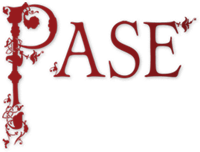Table of Contents
Top of page
Name
Summary
Distribution Map
Property List
Profile
Bibliography
Bottom of page
Holand 2
Holand ‘of Bellington’ (Worcs.), fl. 1066
Male
CPL
4 of 5
Name
Summary
Holand 2 was a small landowner in northern Worcestershire who held one of two manors in a waste vill of 5 hides.Distribution map of property and lordships associated with this name in DB
List of property and lordships associated with this name in DB
Holder 1066
| Shire | Phil. ref. | Vill | DB Spelling | Holder 1066 | Lord 1066 | Tenant-in-Chief 1086 | 1086 Subtenant | Fiscal Value | 1066 Value | 1086 Value | Conf. | Show on Map |
|---|---|---|---|---|---|---|---|---|---|---|---|---|
| Worcestershire | 23,14 | Bellington | Holandus | Holand 'of Bellington' | - | William fitzAnsculf | - | 2.50 | 0.00 | 0.00 | A | Map |
| Totals | ||||||||||||
Profile
The name Holand occurs only once in DB, as the second of two holders of manors in the 5-hide vill of Bellington, on Barnett brook, a tributary of the Stour in north Worcestershire. The vill was waste in both 1066 and 1086, which leaves a question mark over Holand’s status as a landowner.Bellington may perhaps have been involved in some way with Chaddesley Corbett to its south, foreshadowing its later absorption by Chaddesley. Chaddesley was a large manor of 25 hides with eight berewicks (Worcs. 28:1). There is no later record of a manor at Bellington (VCH Worcs. III, 36–40), which lay within the parish and manor of Chaddesley. The location of the surviving Bellington Farm shows that it must have occupied the northern part of the parish along Barnett brook. The intriguing thing is that the three watermills of Chaddesley manor recorded in later centuries and already among the resources of the manor in 1086 stood along the course of the brook at and near Bellington (VCH Worcs. III, 39). If mills physically within Bellington were part of Chaddesley manor in 1086, perhaps Bellington’s ‘waste’ condition denoted not physical destruction but the recording of its resources under the larger manor, ‘administrative waste’ of a type noted elsewhere in DB (Wightman 1975; Lewis 1985: 129–66). In other words, Bellington might have been part of Chaddesley Corbett before 1066, its separate record in DB being due to its acquisition after 1086 by William fitzAnsculf. In 1086 it was at the south-western extremity of William’s compact, geographically-based fief centred on Dudley, though there is absolutely no sign of any later connection with the barony. DB goes out of its way to note that Bellington was in fitzAnsculf’s castlery (in castellaria sua); the phrase is not used of any of his other manors and suggests that there was something unusual about Bellington’s status.
Chaddesley had belonged to the bishops of Worcester from an early date, and according to Hemming’s codicellus was taken from the monks by Earl Leofric of Mercia, restored by his widow Godgifu after his death in 1057, and not long afterwards seized again by their grandsons Earls Edwin and Morcar (Hearne 1723, I, 261–2). How this squares with DB’s account of the tenure of Chaddesley is difficult to say. It was held in 1066 and 1086 by the same person, ‘a certain woman [called] Eadgifu’ (Eddeve quædam femina) (Eadgifu 28). She has been thought to belong to the earls of Mercia’s following (Baxter 2007: 171–2, 251) but might as easily have been a member of their family, given her name: the first element was the same as Earl Leofric’s brother Eadwine (d. 1039) and grandson (Earl Edwin), and the second element the same as Leofric’s wife Godgifu and daughter-in-law Ælfgifu (Baxter 2007: 31–2).
At any rate, it is conceivable that Holand’s manor at Bellingham was in some way associated with Eadgifu’s manor of Chaddesley Corbett in 1066, and therefore that he was part of the wider affinity of the earls of Mercia.
Bibliography
Hearne 1723: Hemingi chartularium ecclesiæ Wigorniensis, ed. Thomas Hearne, 2 vols (Oxford, 1723)
Baxter 2007: Stephen Baxter, The Earls of Mercia: Lordship and Power in Late Anglo-Saxon England (Oxford: Oxford University Press, 2007)
Lewis 1985: CPL, ‘English and Norman government and lordship in the Welsh borders, 1039–1087’ (Oxford University D.Phil. thesis, 1985)
VCH Worcs. III: The Victoria History of the Counties of England: The Victoria History of the County of Worcester, ed. J. W. Willis-Bund, H. Arthur Doubleday, and William Page, 4 vols and index (London, 1901–26)
Wightman 1975: W. E. Wightman, ‘The significance of “waste” in the Yorkshire Domesday’, Northern History, 10 (1975), 55–71
